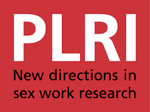A news story in the Times of India by Anahita Mukherji which highlights our research on sex work’s position in the labour market in India. This story was published on Labour Day, or May Day, 2011.
MUMBAI: Very rarely does a survey of prostitution take into account the economics of sex work, or view it in the context of the labour market. While a detailed study of the economics of commercial sex work in the US found its way into the 2009 bestseller Superfreakonomics, two economists from Pune University have studied the same angle in perhaps the first pan-India study of prostitution.
The preliminary findings of the study, conducted by Rohini Sahni and V Kalyan Shankar of the department of economics, Pune University, under the aegis of the Centre for Advocacy on Stigma and Marginalization, Sangli, were released in Mumbai on Saturday.
The researchers surveyed 3,000 female sex workers and 1,355 male and transgender workers from 14 states and one Union Territory in India. The findings were released at the Gender Resource Centre run by Akshara, an organization working in the field of women’s studies.
“While most surveys on prostitution treat sex workers as objects, or focus on issues such as HIV, very rarely is their voice heard. We have attempted to conduct an objective study of prostitution as part of the unorganized labour market in India,” said Sahni.
The study shows that 50% of the women sex workers entered prostitution after prior experience in the other areas of the labour market. Many entered the work force at an early age, often between the ages of 7 and 10, in fields like agricultural labour and domestic work.
It was often strenuous physical labour and low pay that pushed women to quit their earlier professions and join prostitution. The survey shows that their incomes increased nearly five-fold on entering prostitution.
The study shows that those entering prostitution after experience in other labour markets are often poorer, and less educated, as compared to those who directly entered sex work.
Contrary to perception, 70% of both these categories of sex workers (those who entered the profession directly as well as those with prior experience in other fields) say they entered the field of their own accord. The remaining were forced, sold into prostitution or cheated into it. Of those who were sold, a vast majority say that it was their husbands, lovers, friends and acquaintances who sold them, very rarely blaming strangers. Very rarely did they name strangers as the agents who sold them.
Theme:

